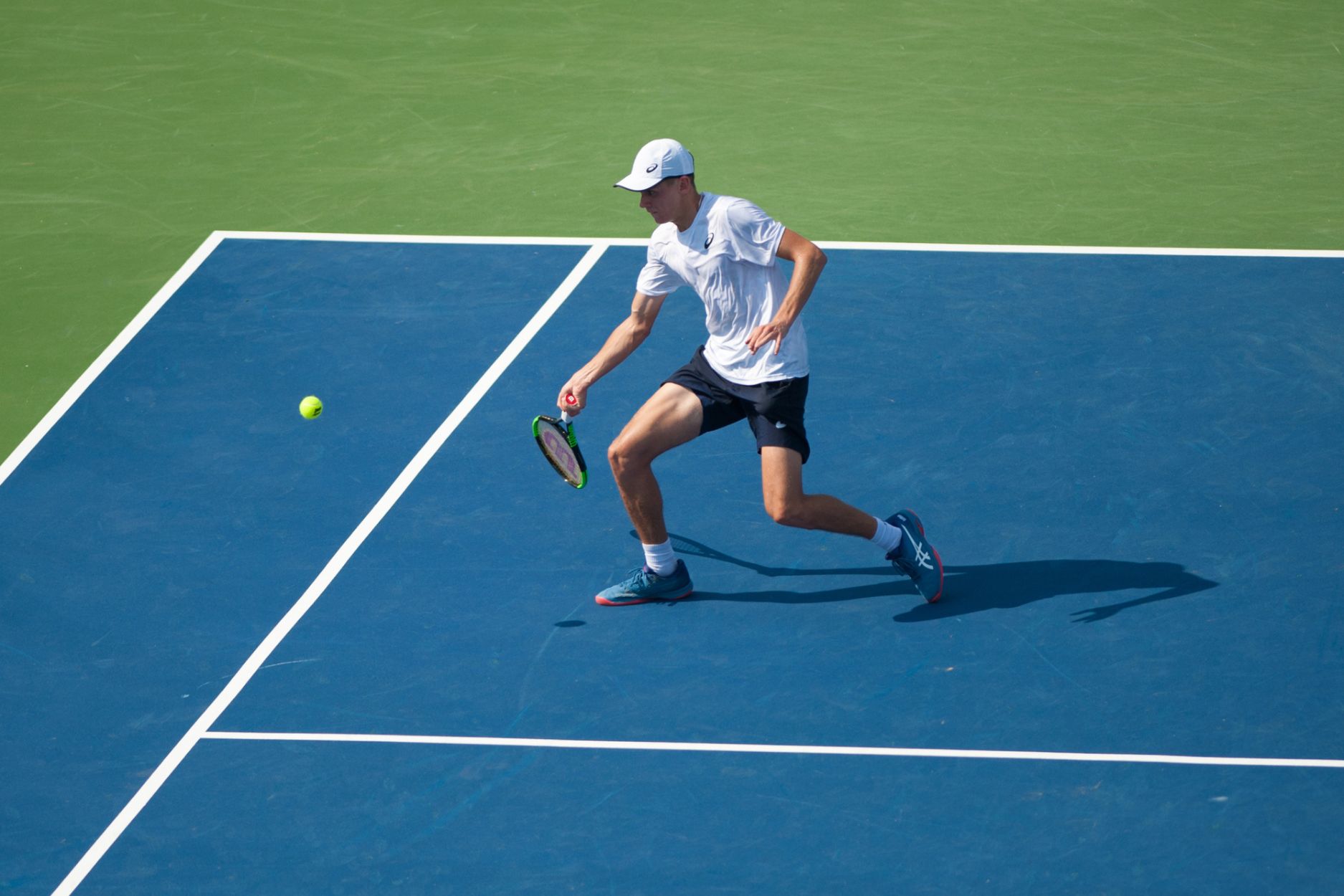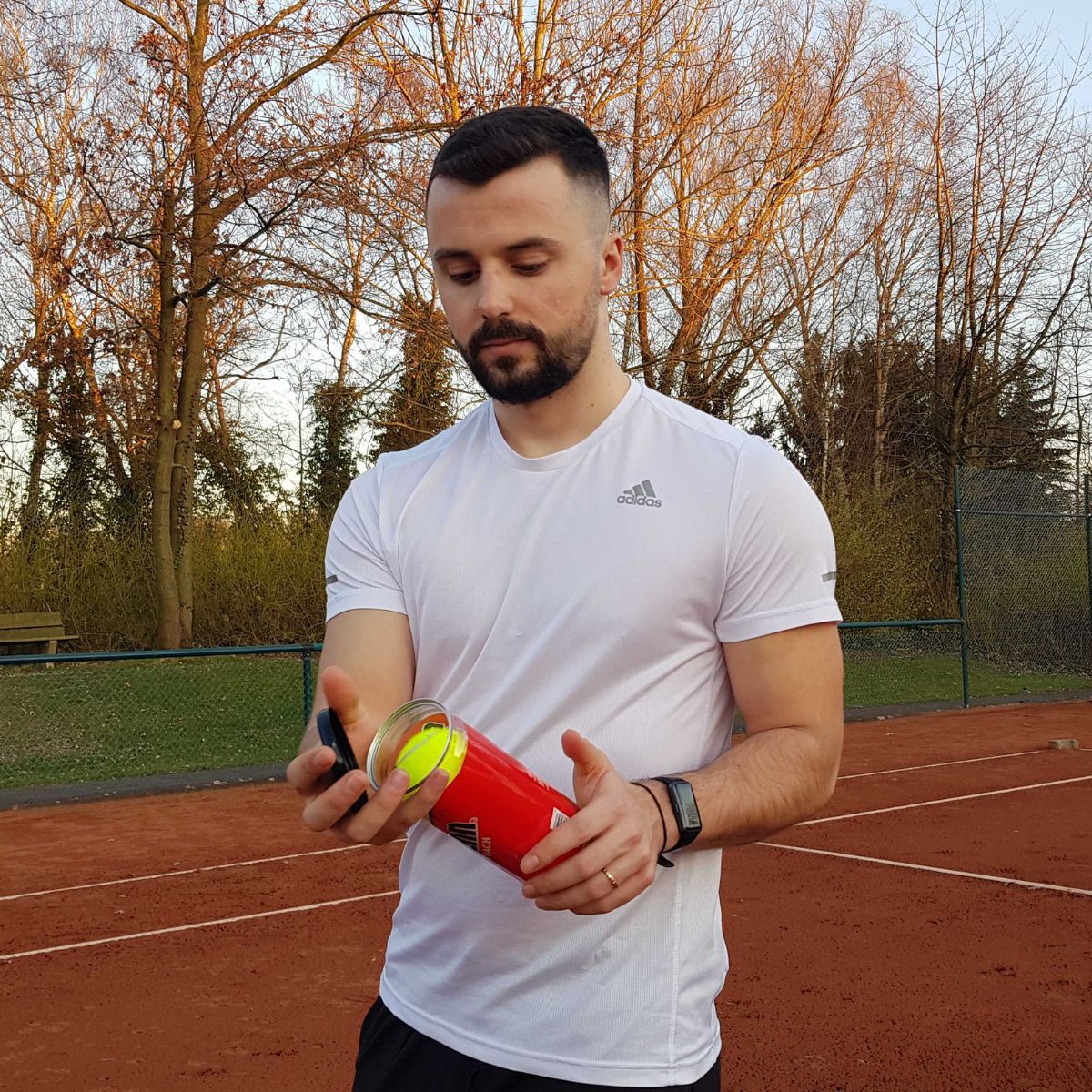Have you ever dreamed of learning how to play tennis and becoming a star athlete like Serena Williams or Roger Federer? It’s a beautiful dream to have, as tennis is one of the most popular sports in the world. But to a beginner, it might be intimidating at first, with all the many rules and techniques that seem impossible to learn. Surely, even your favorite player has once felt this way, but this is not a reason to give up!
Even if you never become a professional, tennis is a great way to build a fit physique, keep yourself engaged in sports and have fun. And with a little effort, you can learn everything you need to know in no time. In this guide, you’ll find all the tennis basics, so keep scrolling.
Before you Play
As with any other sport, the first thing you should think about is where to play tennis. Make sure to pick up a spot that is accessible and close to home, so you’ll know that you’ll be hitting the court regularly. It can be your local tennis club, a gym, a public park, or even at your own backyard if you have enough space.
What to Wear
Make sure to pay attention to what you wear on the court. Your clothes should make you look good and, most importantly, feel comfortable. Tennis is a very intensive sport, so you’ll be moving and sweating a lot; that’s why the outfits should be lightweight and flexible.
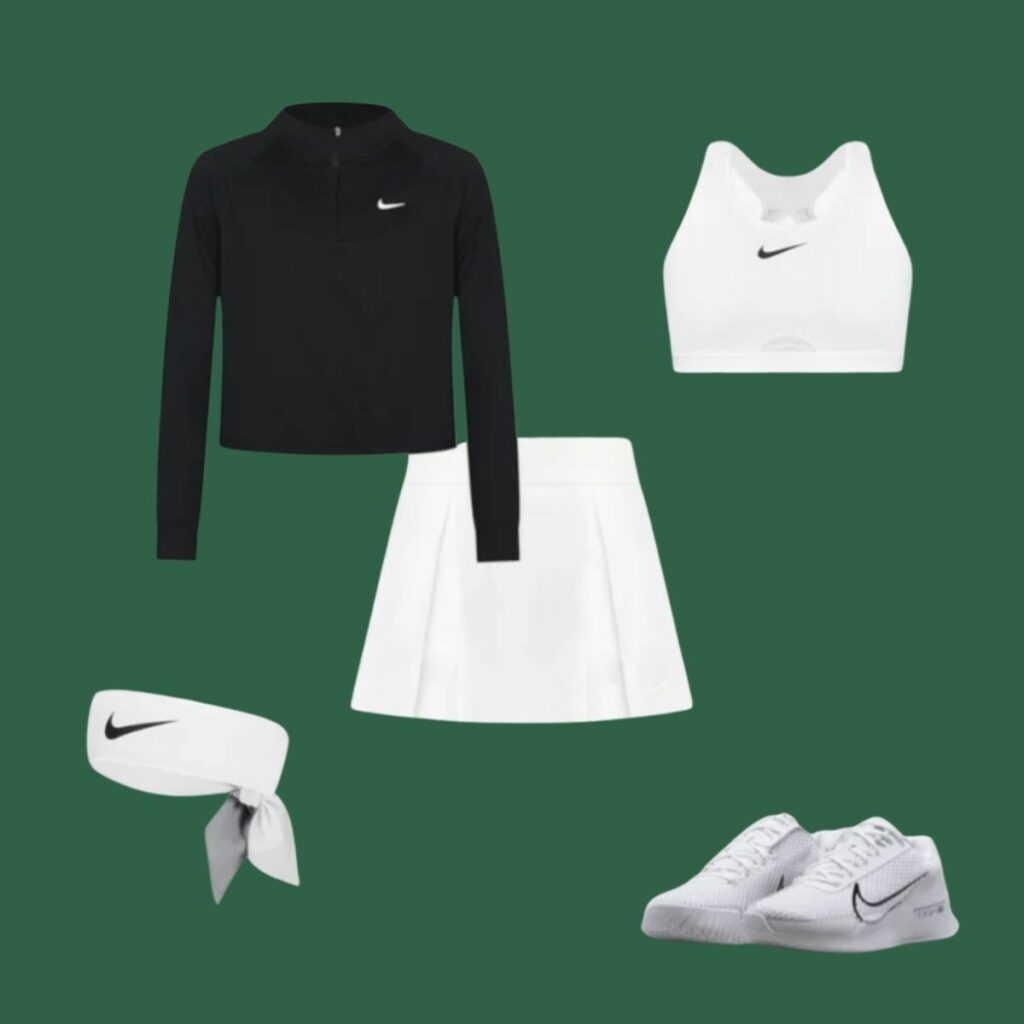
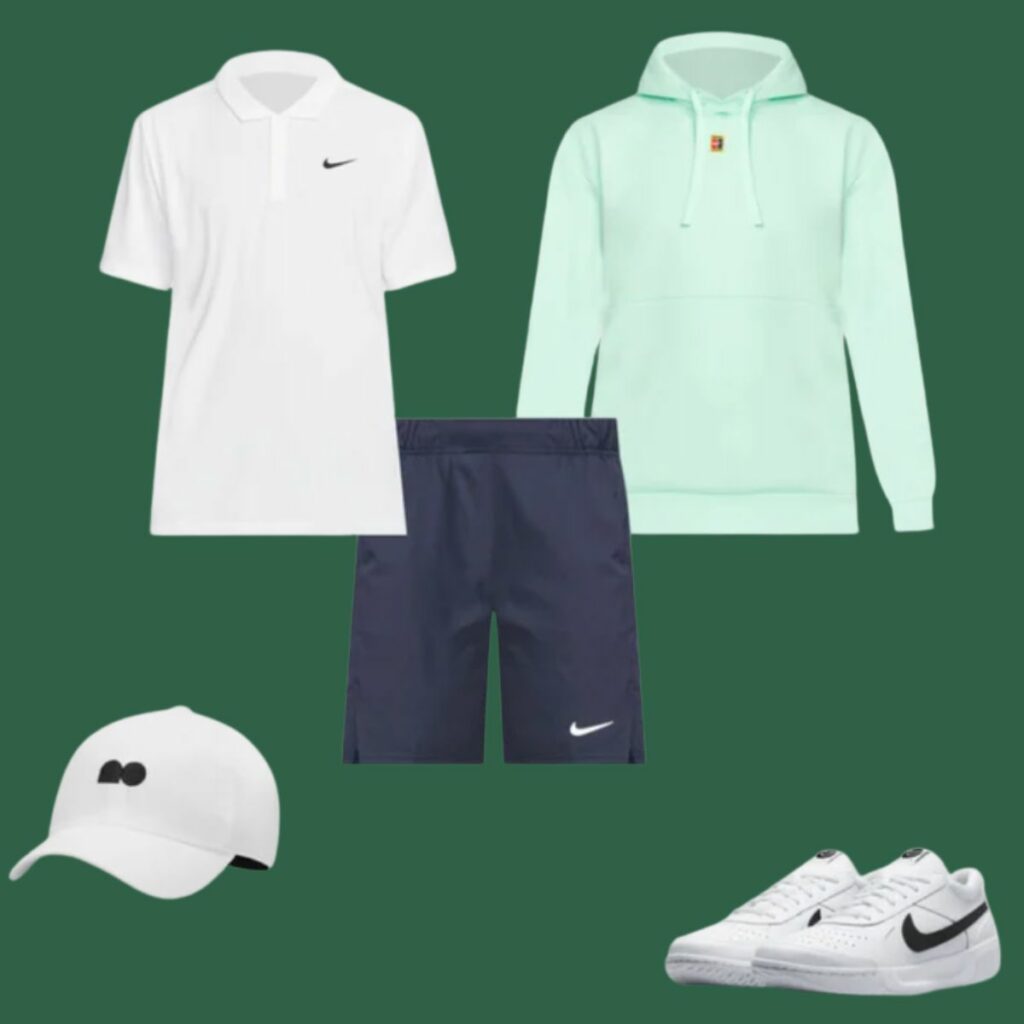
Make sure to pick high-quality clothesthat fit you properly and shoes with a lot of cushioning that will protect your feet from the impact of running and jumping around. Try to list all the things you need; a good tennis bag, the right pair of sunglasses, or a fine hat can make all the difference on the court. Keeping an extra jacket or sweatpants with you would be a good idea, especially in the cold weather, so that you can warm up before the match.
Always make sure to check up on the dress code of the place you’ll be playing, whether it’s an amateur tennis club or a professional tournament. It’s the best way to save yourself from total embarrassment in case some attire isn’t seen as appropriate.
Equipment
Now that we figured out where to play or what to wear, it’s time to think of the equipment needed for tennis. With that being said, you don’t have to spend hundreds of dollars on high-end brands for professional gear, especially if you are a beginner.
Check out your local club or gym; many of them offer free-of-use equipment for beginners, which you can use to get started. If you have to go shopping, plenty of cheaper options will do the work just fine. The most important gear you should give priority to is your tennis racket.
Check the beam and grip size and make sure it feels comfortable to hold. Many other technicalities will impact your comfort and performance on the court, such as head size, string pattern, weight, tension, etc., so take your time and educate yourself on the matter. Also, always make sure to have enough tennis balls with you; they tend to run out and disappear pretty quickly.
About the Court
There are only a few important things you should know about a tennis court; the type of surface and the meaning of the lines all over it.
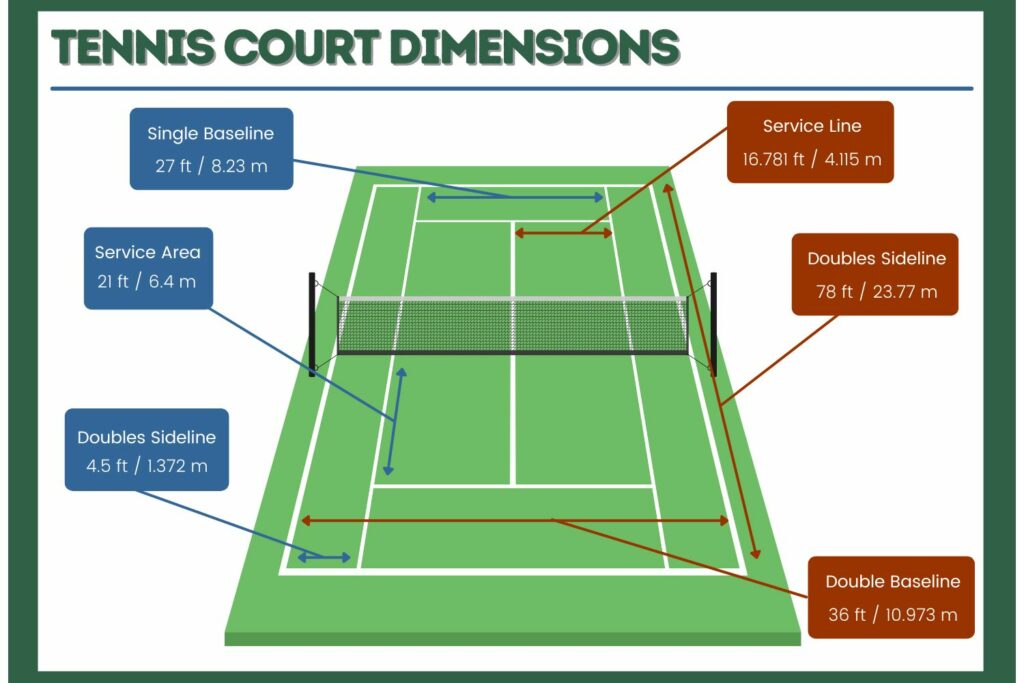
The surface makes all the difference in tennis, as it impacts the player’s performance and the ball’s bounce. Typically a court’s surface can be made of concrete, asphalt, clay, or grass. Each of these has its own attributes and disadvantages.
The different lines separate the courts into a few sections, which helps the player position themself throughout the game.
- Baseline – the last defining boundaries of the court, which stand parallel to each other. This is also where you serve.
- The center mark – is right in the middle of the baseline, and it helps you to mark the positioning of your serves or returns.
- The service line – runs between the net and the baseline. This is where the serves must land.
- The service lines – run at each side of the court to mark a boundary for the ball to land.
- The service boxes – are between the net and the service line. Players must stay on opposite sides of each other.
Basic Rules
The many rules and the tennis scoring system might seem complicated at first, but I promise you, they are not. To win the match, you must score more points in total than the opponent. A point starts when each player makes a serve.
You only win a point when the opponent can’t return your shots or makes a forced error. If, however, the ball bounces against the net or you overhit and cross the lines, then you have lost that point. Simple, right?
Now, let’s explain the tennis scoring system in simple words;
- The game always starts with a zero score for both players, which is called “love.”
- If you win the first point, you score “fifteen”; for the second point, you score “thirty,” and for the third point, you score “forty.” A fourth or a winning score is announced as a “game.” If both players hit forty points, it is called a “deuce,” You can break that only if you win two points in a row.
- You have to win six games and at least two more than your opponent to win a set. Typically, a game has at least three or five sets in total.
Getting Started
For a tennis player, it’s important to develop some basic skills for the game, such as speed, good eye-and-hand coordination, footwork, and fast reactions. The only way to balance all these is by training consistently to be physically and mentally in shape.
Even a simple routine can do wonders for fresh beginners, so make sure to include some basic exercises like touching lines to improve speed, rolling the ball with both hands on the ground so that you can be more agile, using trampoline hoops by jumping on the court, to improve footwork.
Adding other fitness exercises like running or strength training will help you tremendously in the long run.
Handling the Racket
The next step is to learn the different positions of the grip when holding a tennis racket. This is the oldest trick in the book, but it will make all the difference next time you play.
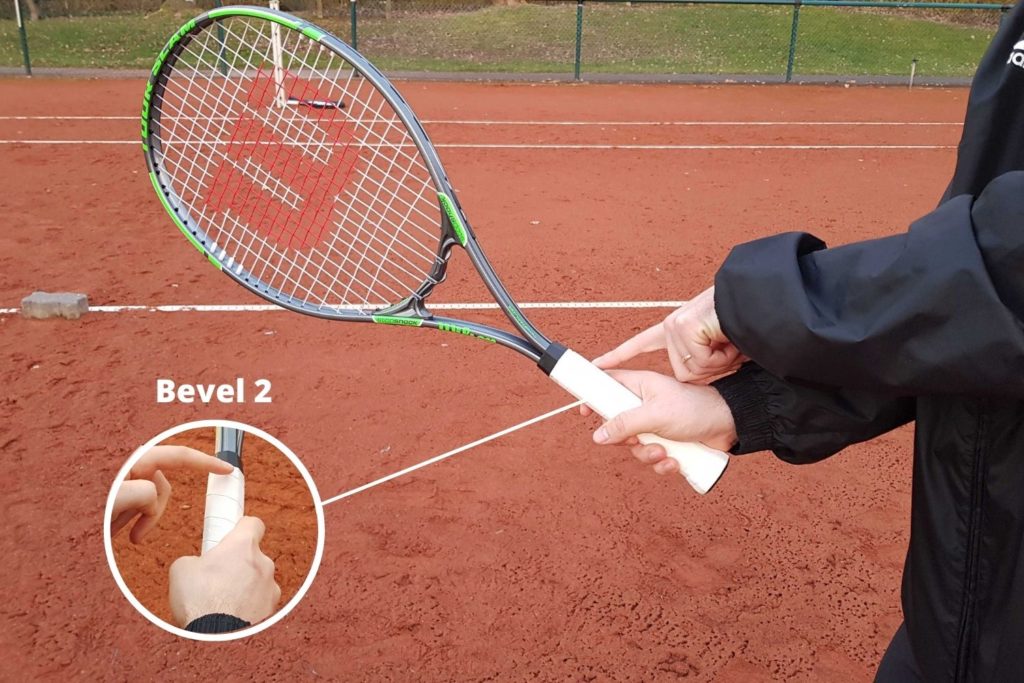
Tennis is an intensive sport, and it is impossible to hold your racket in the same position throughout the game. That’s why you should practice different variations of the grips early on so that you can have better chances of closing off points.
The most common variation of tennis grips are as below;
- Eastern grip
- Continental grip
- Western grip
- Semi western grip
Forehand Drive
The forehand drive is one of the most important techniques to master when learning to play tennis. Simply put, it referees to offensive strokes that can be delivered with backhand or forehand drive, and it aims to force an error on the opponent. As with everything else, practice will make you perfect, so here is how you can do it;
- Stand in a firm position with the legs open at your shoulder width while keeping the knees bent forward. Concentrate all of your attention on the ball, so you’ll be fast enough when it’s time to react.
- Move your body to your right while holding the racket slightly above your shoulder height. Remaining in this position, put one step forward and continue to bend your knees for more balance.
- When the ball is coming in your direction, keep your eyes on the moving target and start swinging the racket.
- When the ball is close enough, use your arm to swing freely and hit it using your body strength.
- Keep an eye on the ball while following through with the movement of the racket on your other shoulder to finish the stroke.
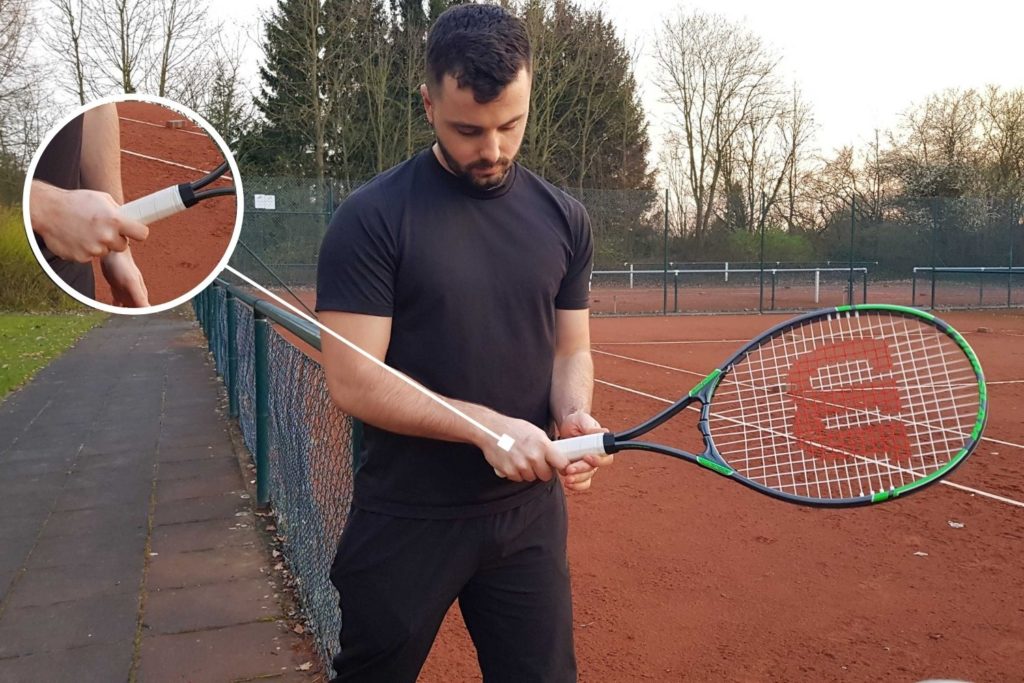
Backhand Drive
You have to be prepared when the ball hits your backhand too. Since tennis requires such intensive and complex movements, it’s often impossible to predict how the game will unfold. The backhand drive might be challenging at first, but it is a great skill to have, so it’s worth investing your time and energy to master it.
- Take a standing position with feet open the same as the width of your shoulders. Bent the knees slightly and held the racket on a double-handed grip while keeping the eyes on the moving ball.
- As you are getting ready to hit your shot, turn your shoulder to the side, and pull the racket back. Put all of your body weight on the back of your foot.
- Step forward to the ball with your dominant side.
- Swing the racket by stretching your arms in front of your body, at around the hip level, so that it can come in contact with the ball.
- On a final move, swing the racket from the hip to your shoulder level again. Follow through the racket while pointing the elbow in the direction of the ball.
The Ready Position
The ready position is the athletic stance a player gets when the opponent hits the ball. This is very beneficial as it makes it easier to react faster and be more alert while predicting where the ball will land. You should always stay in a ready position while waiting to return a serve.
Your fit should be firmly on the ground at a shoulder-width, with the knees bent forward while holding the racket with both of your hands so that you can switch position easily. If you are one of those players that like to move during the “ready position,” that’s perfectly fine as long as you have enough experience on the court, to be sharp on the reaction.
Serve Rules
Every point starts with a service, so you better learn how to master a serve to the best of your abilities. Ask any player or coach, and they will tell you that serving is one of the most important strokes in tennis.
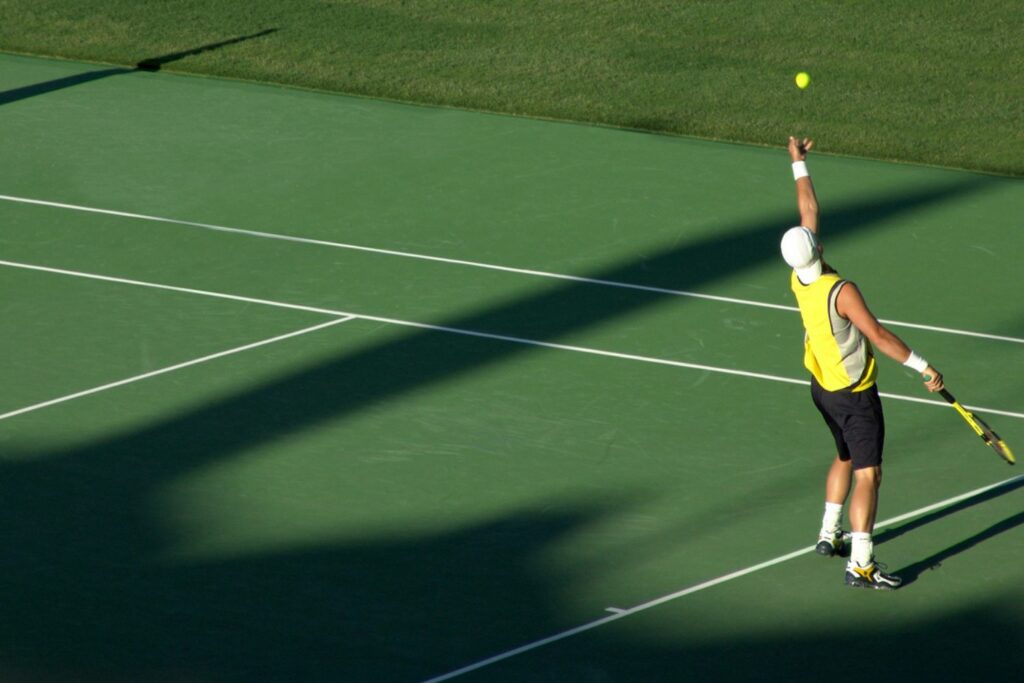
No matter how good you are at other aspects of the game, you will only win games if you put the first and second serves in place. However, before starting the practice, all beginners should first learn the basic service rules.
- The service is always the first shot.
- Players spin the racket to decide who serves first and on which side of the court they want the ball to land.
- The service is always taken behind the baseline, usually nearside the center mark.
- The ball should land on the opponent’s service box, diagonally with the net. In case of a double fault, where you miss your serves twice, the opponent wins the point.
Serve Tactics and Faults
Whatever you do, avoid faults at all costs, or you’ll be giving away precious points to your opponent. Here are some of the most common tennis serve faults, which annoyingly can turn the match for the worst, so watch out!
- Faulty footwork – putting even a part of your foot inside the baseline while you serve.
- Outside the box – when the ball land out of service box lines.
- Let serve is not exactly a fault because you can hit again, but it’s better to avoid it.
- Missing the ball – during swings is considered a fault.
- Serving doesn’t go past the net – it is ruled out as a fault.
- Not following the serving rules – is a fault in itself.
As you learn the fundamentals of tennis, it’s normal that you start to progress with more ambitious targets on the service box. However, you can use some useful tactics to prevent faults and stay on top of your game.
- Tactical serving – is when you aim for the middle part of the box, pushing the ball toward the opponent’s body, which makes the returns way more difficult.
- Service drills – it’s simple yet very effective. Put groups of three tennis balls all over the service box, and hit them. The goal is to aim for more control and accuracy, allowing the player to hit any target.
Returning Serve
Returns are a very important aspect of tennis, which aims to break the opponent’s serve attack and win a point. Building reliable skills and a strategy for your returns is a long-term investment in the game, which will help you be more aggressive and keep the ball in play for a longer time.
Make sure to work on your standing position, as you’ll never know for certain in which direction the ball will come. Keep an eye on your opponent’s weakness and aim for that; if the opponent like flat shots, try for a higher launching angle; if he struggles with the backside slices, hit them there. Most importantly, try to move with the ball and learn to build a good pace and rhythm, which will make you more adaptable on the court.
Stepping it Up (Advanced Shoots)
After you have mastered all the tennis basics, it’s time to move up the ladder and try to master more advanced shots. Of course, these are skills and techniques that one learns with time; however, it is always good to learn them beforehand to know what you should expect in the next step.
Volley
With volleys, the player aims to make a return before the ball even bounces to the ground. Punching the ball might not take as much effort as other strokes, but it’s a vital part of the game as long as you stay close to the net.
The more you practice volleys, the more you’ll be able to put pressure on the opponent while gaining more control over the game’s outcome.
Generally speaking, there are six types of volleys, all differentiating on the launch angle and height; punch volleys; drop volleys; lob volleys, swinging volleys, and half volleys.
Lob
A lob is a volley shot that aims to push the ball deeper into the opponent’s side of the court. It can be used as both a defensive and attack mechanism, and it can be achieved only by adding more spin to your game.
Here’s a step-by-step guide on performing a classical lob;
- Hold your tennis racket in the same position as you would do with a forehand drive. When the ball is coming at you, turn the shoulder slightly at the side while using the non-dominant hand for balance while keeping the racket low.
- Step into the ball, and if you have to bend your knees to reach a lower-angle shot. Keep your racket arm bent, too, as you swing higher.
- Hit the ball with a racket at the side of your body, and push it forward, giving it your best lift.
- Finish the shot by following through the lob with the racket over your shoulder and then get back into position.
Overhead Smash
The overhead smash is a difficult yet powerful move in tennis, where the player hits the ball over the head and push it back deep into the opponent’s court. It requires a lot of concentration, control, and a good sense of timing.
The mechanical movement is quite similar to a server, only that you are closer to the net while you are also shooting over your head. When reaching for the shot, it’s important to add a lot of strength while reaching for the highest point of contact with the ball. Practicing footwork and eye coordination is also a good way to master the overhead smashes.
Slice and Topspin
Slices and tospin are more advanced strokes that players usually master after learning all about the basics of tennis. The main goal during the game is that the opponent won”t return your shots so that you can close the point sooner. When you mix slices with spin in your game, it confuses the opponent while allowing more variations and control over the ball.
Usually, players use a semi-western grip to practice these shots because it generates strength and spins with more ease; however, you can always experiment with other techniques until you find the sweet spot.
Drop Shot
Drop shot might seem like a soft, almost effortless move on the court, but make no mistake; this is one of the hardest returns you can master. It will leave your opponent confused and with almost no physical time to reach for the ball before you can score.
If done right, the drop shop technique can be used to force an error or make the other player rush from the back of the baseline, closer to the net. Combined with a killed lob, it can be a perfect way to win your point.
Match Play
When preparing for a match is important also to be aware of the unwritten rules of tennis, which will make the game fair play and more enjoyable for all those who participate in it.
Playing at the Baseline
The baseline is where most of the players fight for their points, so it’s better to be well-prepared when hitting the court. Unlike the common misconceptions, the baseline is not only for those who are constantly in a defensive mode; it can actually be a good place to launch the attack on the opponent.
For this, however, you need to master all the necessary skills and techniques while also gaining more experience. You can start by being physically in shape and working with your cardio or getting a hitting partner to train together to practice different strokes.
Playing at the Net
The net is not there for you just to shake hands with the opponent before and after the game. So don’t be shy, and get comfortable with being closer to it by being bolder and more aggressive. You can break the ice by getting up to the net immediately after the service and standing in a ready position as the opponent hits a return.
Punching different types of volleys while aiming for their weaker side will definitely bring the hit on the court and put your step ahead on the game. So what are you waiting for? Start practicing!
Match Tips and Tactics
It’s not a secret that tennis is a competitive game, and all players always aim to impress their opponents by showing complex moves and skills. This might be very intimidating for some, but that’s okay; we all have felt this way.
Some simple tricks to build up your confidence will also help you save face on those days when you lose a match without feeling embarrassed. Hey, even the great players have lost a game or two, right? Here is what you should do;
- Train your mind – just like you do with the body. As cliche as it sounds, winning is, above all, a mindset; if you don’t have faith in yourself first, nobody else will.
- Get to know the opponent – the more familiar you are with the person you are playing with, the more secure you feel. Make some research on the tennis background, if it has previous experience, or shows any type of weakness.
- Warm up – don’t neglect your trainer’s tips; warming up your muscles is the best way to prepare your body for the match.
- Have fun – at the end of the day, tennis is a game, and it’s not that serious. So you lost a game; it’s not the end of the world. You get to play and enjoy a beautiful sport while meeting a ton of new people. Cheer up!
Playing Doubles
Many players opt out for double games with the same scoring system, rules, and stroke techniques. However, the game experience might feel very different, as it requires you to be sharper and more dynamic in your moves because you are dealing with two opponents instead of one.
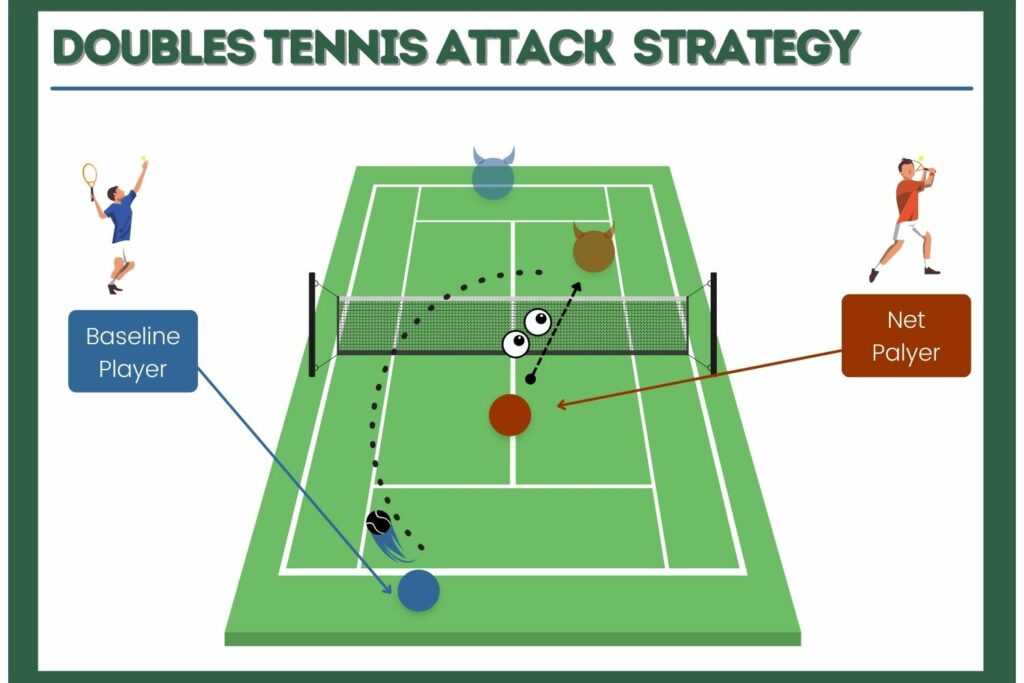
It’s also important to harmonize your strokes and responses with your partner, to help each other out. It’s important always to have the middle of the court covered by at least one team player so that the opposing forces an error at wide shots and lands the ball out.
